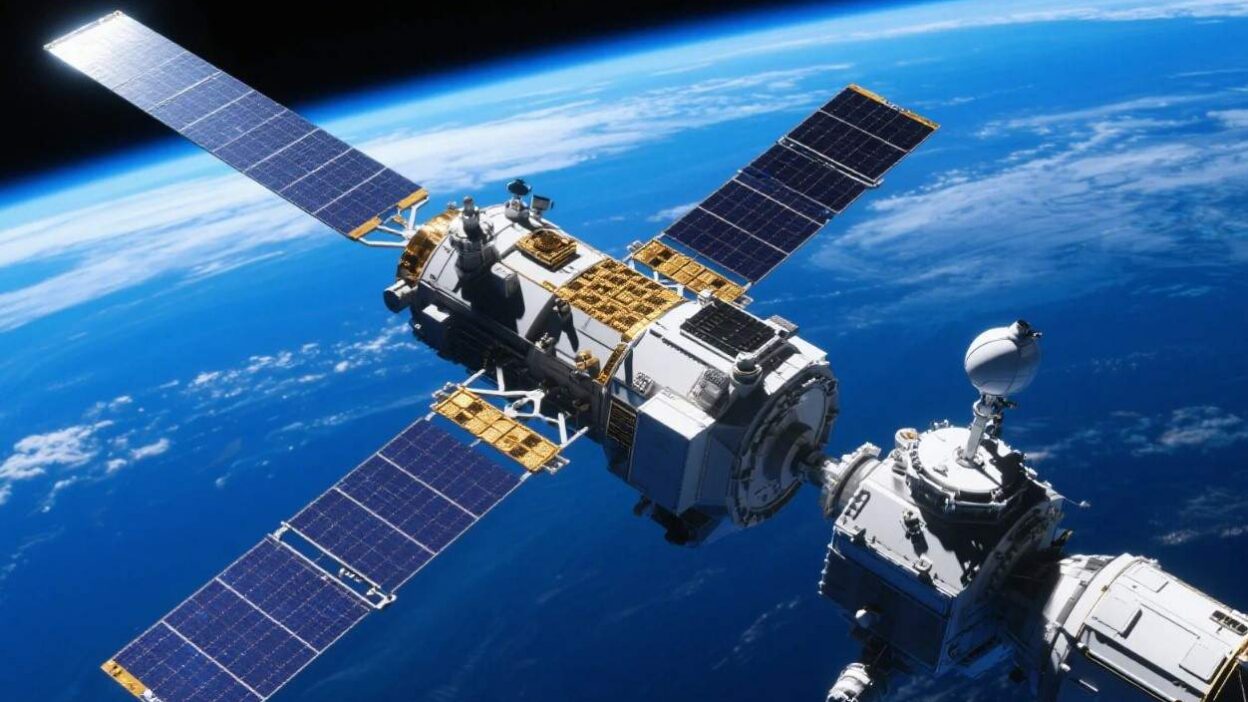The Imperative of Quantum Communication in Deep Space
Humanity’s ambition to explore deep space—from Mars rovers to interstellar probes—faces a critical bottleneck: communication. Traditional radio-based systems, while foundational, are constrained by the speed of light (latency), vulnerability to interference, and limited bandwidth. For missions to distant worlds like Mars (34 million miles from Earth at closest approach) or the outer planets (billions of miles away), these limitations risk delaying critical data, endangering crew safety, and compromising scientific discovery.
Enter quantum communication—a revolutionary paradigm leveraging quantum mechanics to enable secure, high-fidelity, and potentially low-latency communication. By harnessing properties like quantum entanglement, superposition, and the no-cloning theorem, quantum communication promises to transform deep space missions, offering unbreakable encryption, faster data transfer, and resilience to cosmic interference. This report explores how quantum communication is poised to redefine space exploration, addressing its principles, current applications, challenges, and future potential.
Quantum Communication: A Primer
Quantum communication leverages the unique behavior of quantum particles (e.g., photons) to transmit information. Unlike classical communication, which uses bits (0s and 1s), quantum communication uses qubits—quantum states that can exist in superposition (both 0 and 1 simultaneously) and become entangled (correlated across vast distances). Key technologies include:
- Quantum Key Distribution (QKD): Enables two parties to share encryption keys with unconditional security, as any interception of qubits disturbs their quantum state, alerting the sender/receiver.
- Quantum Teleportation: Transfers quantum states between particles over long distances using entanglement, though it does not transmit matter or classical information faster than light.
- Quantum Repeaters: Extend the range of quantum communication by storing and re-emitting entangled qubits, overcoming the “distance limit” of direct photon transmission.
These technologies address classical communication’s flaws: QKD eliminates eavesdropping risks, while quantum teleportation and repeaters enable secure, long-distance data transfer.
Traditional Deep Space Communication: Limitations
Current deep space missions rely on radiofrequency (RF) communication, which faces three critical limitations:
- Latency: Light (and thus radio waves) travels at ~186,000 miles per second. For Mars, a one-way signal takes 3–22 minutes; for Jupiter, 30–60 minutes. This delay delays command responses (e.g., rover navigation) and scientific data retrieval, risking mission failure.
- Security Vulnerabilities: RF signals are easily intercepted or jammed. Adversaries could disrupt communications or steal sensitive data (e.g., mission plans, planetary science findings).
- Bandwidth Constraints: RF spectrum is crowded, limiting data rates. For example, the Mars Reconnaissance Orbiter transmits ~150 Mbps, insufficient for high-resolution imaging or real-time video from future crewed missions.
Quantum communication directly addresses these gaps, offering secure, high-bandwidth links with minimal latency.
Quantum Communication in Deep Space: Solving the Challenges
1. Unbreakable Security with QKD
Quantum Key Distribution (QKD) is a game-changer for deep space security. By encoding keys in qubits, QKD ensures that any interception (e.g., by an adversary or cosmic noise) alters the qubits’ state, alerting the receiver. For example:
- China’s Micius satellite (2017) demonstrated intercontinental QKD over 1,200 km, securing a video call between Beijing and Vienna. In deep space, QKD could protect commands sent to Mars rovers or crewed missions, preventing sabotage or data theft.
2. High-Speed Data Transfer with Quantum Teleportation
Quantum teleportation enables the transfer of quantum states (e.g., sensor readings, images) without physical transmission. While not faster than light, it eliminates the need for classical data channels, reducing bandwidth usage. For instance:
- A rover on Mars could teleport high-resolution image data to Earth using entangled qubits, freeing up RF bandwidth for critical commands.
3. Extended Range with Quantum Repeaters
Quantum repeaters—devices that store and re-emit entangled qubits—extend communication ranges beyond the ~1,000 km limit of direct satellite-to-ground QKD. For deep space, repeaters could be placed in orbit around the Moon, Mars, or Lagrange points (stable gravitational points) to create a “quantum internet” spanning the solar system.
Current Technologies and Missions Paving the Way
1. China’s Micius Satellite: A Pioneer in Space QKD
Launched in 2016, Micius is the world’s first quantum communication satellite. It demonstrated:
- Intercontinental QKD: Transmitting secure keys between Asia and Europe over 7,600 km.
- Quantum Teleportation: Teleporting qubits 1,200 km to ground stations.
While Micius focused on near-Earth communication, its success validated quantum technologies for space.
2. NASA’s Quantum Communication Experiments
NASA is testing quantum communication on the International Space Station (ISS) and lunar missions:
- ISS Experiments: The Optical Payload for Lasercomm Science (OPALS) tested laser-based (classical) communication, but NASA is integrating quantum components to enhance security.
- Lunar Gateway: The planned lunar space station will include quantum communication terminals to support crewed missions and lunar rovers.
3. European Space Agency (ESA) and Quantum Networks
ESA is developing Quantum Internet initiatives, including:
- Quantum Repeaters: Prototypes for space-based repeaters to extend QKD ranges.
- Satellite Constellations: Plans for a fleet of quantum satellites to provide global coverage, with deep space extensions.
Challenges: Technical, Engineering, and Theoretical
Despite progress, quantum communication in deep space faces significant hurdles:
1. Technical Limitations
- Qubit Stability: Qubits (e.g., photons) are fragile. Cosmic radiation, temperature fluctuations, and vacuum conditions in space can decohere qubits, destroying quantum states.
- Power and Weight: Quantum devices (e.g., single-photon detectors, entanglement sources) require significant power and cooling, conflicting with spacecraft weight constraints.
2. Engineering Challenges
- Miniaturization: Spacecraft have limited payload space. Developing compact, lightweight quantum modules (e.g., qubit emitters, receivers) is critical.
- Integration: Quantum systems must work with existing RF and optical communication infrastructure, requiring hybrid architectures.
3. Theoretical Gaps
- Error Correction: Quantum systems are prone to errors from decoherence. Developing robust quantum error correction codes for deep space (where errors accumulate over light-years) is unresolved.
- Relativistic Effects: Near black holes or at relativistic speeds, time dilation and length contraction could disrupt quantum communication, requiring new theoretical frameworks.
Ethical and Security Considerations
Quantum communication’s potential raises ethical questions:
- Quantum Arms Race: Nations may weaponize quantum decryption, threatening global security.
- Digital Divide: Ensuring developing nations access quantum communication technologies to avoid marginalization.
- Privacy Concerns: While QKD secures data, quantum computing could eventually break classical encryption, necessitating a “quantum-safe” transition.
The Future: Scaling Quantum Communication for Deep Space
The future of quantum communication in deep space hinges on innovation and collaboration:
- Advanced Hardware: Developing fault-tolerant qubits (e.g., topological qubits) and compact, radiation-hardened quantum devices.
- Hybrid Networks: Integrating quantum and classical communication to balance security and bandwidth.
- Global Standards: Establishing international protocols for quantum communication, ensuring interoperability and security.
- Interdisciplinary Research: Collaborating across physics, engineering, and astrobiology to address theoretical and practical challenges.
Unlocking the Secrets of the Cosmos
Quantum communication is not just a technological leap—it is a gateway to humanity’s future in space. By enabling secure, high-speed communication across the solar system, it will empower deep space missions to explore, discover, and thrive. As we venture to Mars, the outer planets, and beyond, quantum communication will ensure we stay connected, secure, and informed.
The universe is vast, but with quantum communication, the void between stars is no longer a barrier—it is a bridge to new frontiers.



